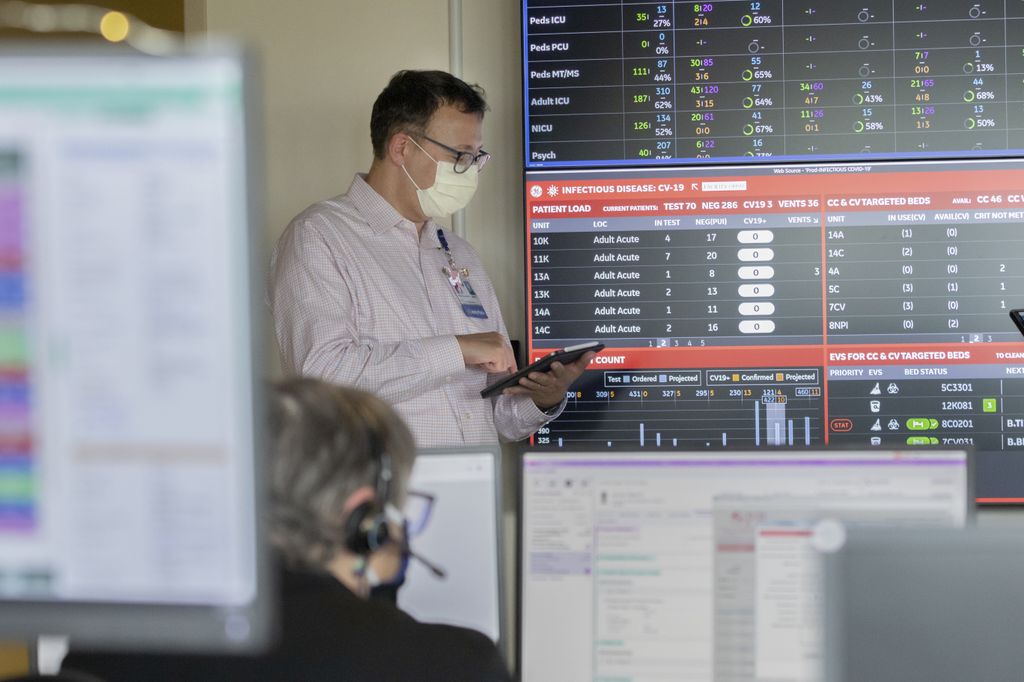
Oregon Health & Science University is establishing an emergency critical care network that could prove indispensable if Oregon experiences a secondary surge or ongoing waves of COVID-19 cases. Once established, the network could be useful over the long term to help in the event of a natural disaster that overwhelms local hospital capacity.
The U.S. Army is funding the project as a proof of concept at OHSU, as well as at eight other institutions across the country.
OHSU will expand its existing virtual intensive care unit platform to establish the new emergency critical care network.

“This will allow us to lead the effort in Oregon to connect rural areas to the expertise in our academic health center through easily deployable technology,” said Matthias Merkel, M.D., Ph.D., OHSU senior associate chief medical officer for capacity management and patient flow, and professor of anesthesiology and perioperative medicine in the OHSU School of Medicine.
The project would effectively expand OHSU’s existing ability to monitor real-time data throughout its own health system, dubbed Mission Control, and its virtual intensive care unit built on technology solutions developed by GE Healthcare.

The proof of concept, which would establish the equivalent of intensive care in far-flung locations, would be deployed remotely on Microsoft Azure’s cloud and would leverage Microsoft Teams to enable communication among clinicians.
The system would enable video as well as continuous, remote monitoring of parameters, such as blood pressure and oxygen flow, from rural hospitals or even temporary quarters, such as armories or tents, giving those facilities access to specialist surveillance and expertise at OHSU.
OHSU leaders envision developing the platform so that OHSU can use it to help manage critically ill patients in far-flung areas across Oregon during a disaster and adding to the expanding options with OHSU virtual critical care.
“Perhaps the greatest power of digital in health care is its ability to give clinicians the right patient information they need, when and how they need it,” said Anders Wold, president and chief executive officer of GE Health Care Clinical Care Solutions. “Digital pulls in data from various devices and parameters, presents it remotely and makes it actionable for clinicians in the tie of crisis, whether on an individual or larger scale.”
The Army is funding the initial proof of concept with $210,000, followed by additional funding for additional deployment and testing. The goal is to develop a remote critical care management platform that could be useful in military operations overseas and to help in public health disasters within the U.S.

“If there’s another natural disaster or a pandemic, we’ll have this national critical care network available to be used by FEMA or the Department of Defense,” said David Zonies, M.D., associate chief medical officer for critical care services at OHSU, and professor of surgery (trauma, critical care and acute care surgery) in the OHSU School of Medicine.
Zonies, who also serves as a colonel in the U.S. Air Force Reserve, envisions using the platform over the long term in Oregon.
“The military is really interested in prolonged field care,” Zonies said. “When you’re under attack, or you can’t fly a military transport jet or helicopter to get combat casualties out, how can you support the unit when they may not have an ICU doctor on the ground?
“Rather than fly out to a place, we should be able to take care of dozens and dozens of patients simultaneously.”
